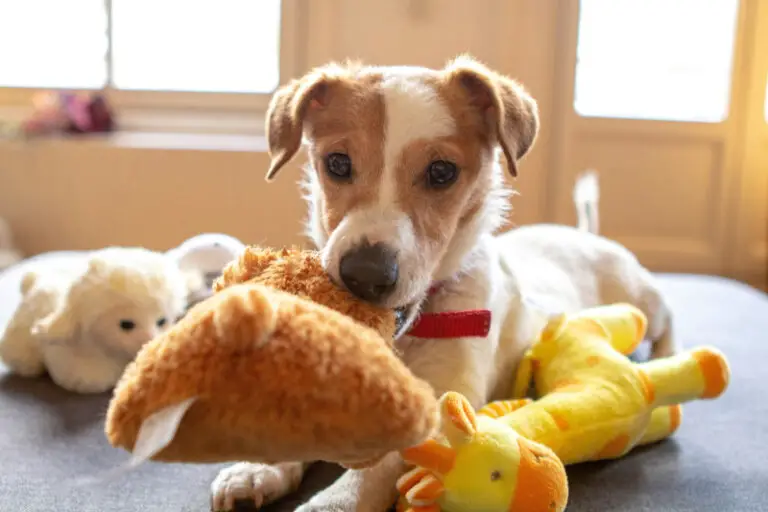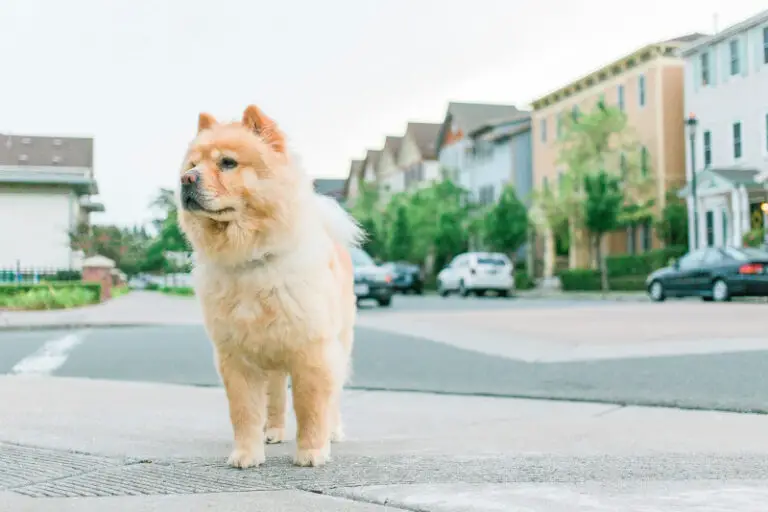Adopting a dog is a life-changing decision that brings immense joy and responsibility. Understanding the commitment involved is crucial for a successful and fulfilling experience. When you decide to adopt a dog, you are not just bringing a pet into your home; you are welcoming a new family member who will rely on you for love, care, and companionship.
Preparation is key to ensuring a smooth transition for both you and your new furry friend. This involves researching different breeds, understanding their needs, and assessing your own lifestyle to determine the best fit. It’s important to consider factors such as the dog’s size, energy level, and temperament to ensure they align with your living situation and daily routine.
The dog adoption process can vary depending on the organization or shelter you choose. Generally, it involves several steps designed to match you with a dog that suits your lifestyle and to ensure the well-being of the animal. This process often includes filling out an application, undergoing a home visit, and meeting potential dogs. It’s essential to be patient and open-minded during this time, as finding the right match can take some time.
Adopting a dog from a shelter or rescue organization is a rewarding experience that not only provides a loving home for a dog in need but also helps reduce the number of homeless animals. Many shelters offer resources and support to help new pet owners, including training classes and veterinary care. By choosing to adopt, you are making a positive impact on the lives of animals and contributing to the efforts of pet rescue services.
For more information on the challenges and rewards of the dog adoption process, you can visit our detailed guide on why the dog adoption process can be so difficult. This resource provides valuable insights and tips to help you navigate the journey of bringing a new dog into your home.
In summary, adopting a dog requires careful consideration, preparation, and a commitment to providing a loving and stable environment. By understanding what to expect and taking the necessary steps, you can ensure a successful and fulfilling adoption experience for both you and your new canine companion.
Table of Contents
Pre-Adoption Considerations
Assessing Lifestyle Compatibility
Adopting a dog is a long-term commitment that requires careful consideration of your lifestyle and how it aligns with the needs of a dog. One of the first steps in the dog adoption process is to assess whether your daily routine and living situation are compatible with having a pet.
Time Commitment
Dogs require a significant amount of time and attention. From daily walks and playtime to feeding and grooming, the time you can dedicate to your new pet is crucial. Puppies, in particular, need more time for training and socialization. If you have a busy schedule or travel frequently, you may need to consider whether you can provide the necessary care and attention. For those with limited time, adopting a senior dog might be a better option as they often require less intensive care.
Activity Levels
Different breeds have varying energy levels and exercise needs. High-energy breeds like Border Collies or Labrador Retrievers require ample exercise and mental stimulation. On the other hand, breeds like Bulldogs or Basset Hounds are more low-key and may be better suited for a less active lifestyle. Assessing your own activity level and choosing a breed that matches it is essential for a harmonious relationship.
Family Dynamics
Consider the dynamics of your household. If you have young children, it’s important to choose a dog that is known for being good with kids. Some breeds are more tolerant and patient, making them better suited for families. Additionally, if you have other pets, you’ll need to ensure that the new dog can coexist peacefully with them. Introducing a new dog to an existing pet requires careful planning and gradual introductions to ensure a smooth transition.
Financial Responsibility
Owning a dog comes with financial responsibilities that go beyond the initial adoption fees. It’s important to be prepared for the ongoing costs associated with pet ownership.
Initial Adoption Fees
The cost of adopting a dog can vary depending on the shelter or rescue organization. Adoption fees typically cover vaccinations, spaying or neutering, and a basic health check. Some shelters may also include microchipping and initial supplies like a collar and leash. It’s important to understand what is included in the adoption fee and budget accordingly.
Ongoing Care Costs
Once you bring your new dog home, there are ongoing expenses to consider. These include food, grooming, regular veterinary check-ups, and preventive medications for fleas, ticks, and heartworms. Additionally, you may need to invest in training classes, especially if you adopt a puppy or a dog with behavioral issues. Budgeting for these recurring costs is essential to ensure you can provide the necessary care for your pet.
Unexpected Medical Expenses
Dogs, like humans, can experience unexpected health issues. It’s important to be financially prepared for potential medical emergencies or chronic conditions that may arise. Pet insurance is an option to help mitigate some of these costs, but it’s also wise to have a savings plan in place for unexpected veterinary bills. Understanding the financial commitment involved in dog ownership is crucial for making an informed decision.
Researching Breeds and Shelters
Thorough research is essential when considering dog adoption. This includes understanding breed characteristics and finding reputable shelters or rescue organizations.
Breed Characteristics
Different breeds have unique traits and temperaments. Researching breed characteristics can help you find a dog that fits your lifestyle and preferences. For example, if you live in an apartment, a smaller breed like a Dachshund or a French Bulldog might be more suitable. Conversely, if you have a large yard and enjoy outdoor activities, a larger, more active breed like a Golden Retriever or a German Shepherd could be a better fit. Understanding the specific needs and behaviors of different breeds will help you make an informed choice.
Reputable Shelters or Rescues
Choosing a reputable shelter or rescue organization is crucial for a positive adoption experience. Look for organizations that prioritize the well-being of their animals and have transparent adoption policies. Reputable shelters will provide detailed information about the dog’s health, behavior, and history. They may also offer support and resources to help you and your new pet adjust. Visiting the shelter and interacting with the staff can give you a sense of their commitment to animal welfare.
Adoption Policies and Procedures
Each shelter or rescue organization has its own adoption policies and procedures. It’s important to familiarize yourself with these before beginning the adoption process. Some organizations may require a home visit or a trial adoption period to ensure a good match. Understanding the requirements and being prepared to meet them will help streamline the process. Additionally, some shelters may have specific policies regarding the adoption of puppies, senior dogs, or dogs with special needs. Being aware of these policies will help you navigate the adoption process more effectively.
By carefully considering these pre-adoption factors, you can ensure that you are fully prepared for the responsibilities of dog ownership. This thoughtful approach will help you find a dog that fits well with your lifestyle and provide a loving and stable home for your new furry friend.
The Adoption Process
Preparing Your Home
Before bringing your new dog home, it’s essential to prepare your living space to ensure a smooth transition. Creating a safe and welcoming environment will help your new pet feel comfortable and secure.
Safe Space for the New Dog
Designate a specific area in your home where your new dog can retreat and feel safe. This could be a quiet corner with a comfortable bed or a crate that serves as their personal space. Having a designated area helps the dog acclimate to their new surroundings and provides a sense of security. Make sure this space is away from high-traffic areas and loud noises, especially during the initial days of adjustment.
Essential Supplies
Stock up on essential supplies before your new dog arrives. These include high-quality dog food, water and food bowls, a comfortable bed, and toys for mental stimulation. Additionally, you’ll need grooming supplies such as a brush, nail clippers, and dog shampoo. Having these items ready will make the transition smoother and help your new pet settle in more quickly. Don’t forget to get a collar with an ID tag and a sturdy leash for walks.
Dog-Proofing the Environment
Dog-proofing your home is crucial to ensure the safety of your new pet. Remove any hazardous items such as toxic plants, chemicals, and small objects that could be swallowed. Secure electrical cords and keep them out of reach. If you have valuable furniture or items you want to protect, consider using baby gates to restrict access to certain areas. Ensuring your home is safe and secure will prevent accidents and create a pet-friendly environment.
Meeting Potential Dogs
The process of meeting potential dogs is an exciting and crucial step in the dog adoption journey. It’s important to take your time and ensure that the dog you choose is a good fit for your family and lifestyle.
First Impressions and Interactions
When you first meet a potential dog, pay attention to their behavior and how they interact with you. Are they friendly and approachable, or do they seem fearful and anxious? First impressions can provide valuable insights into the dog’s temperament. Spend some time playing and interacting with the dog to gauge their energy level and personality. Remember, it’s normal for dogs to be a bit reserved initially, especially in a new environment.
Assessing Temperament and Compatibility
Assessing the dog’s temperament is essential to ensure compatibility with your lifestyle. Observe how the dog reacts to different stimuli, such as loud noises or other animals. If possible, take the dog for a short walk to see how they behave on a leash. Consider whether the dog’s energy level matches your own and if they exhibit any behavioral issues that may require additional training. It’s also important to consider the dog’s history, especially if they are a rescue dog, as past experiences can influence their behavior.
Involving the Entire Household
Involving all members of your household in the process of meeting potential dogs is crucial. This includes children, other pets, and anyone else who will be living with the dog. Ensure that everyone has a chance to interact with the dog and observe how the dog responds to each person. This will help determine if the dog is a good fit for your family dynamics. If you have other pets, arrange a controlled introduction to see how they get along. Compatibility with existing pets is essential for a harmonious household.
Completing the Adoption
Once you’ve found the right dog, the final step is to complete the adoption process. This involves paperwork, health checks, and ensuring your new pet is properly identified and licensed.
Necessary Paperwork
Completing the necessary paperwork is a critical part of the dog adoption process. This typically includes an adoption application, an agreement outlining your responsibilities as a pet owner, and any other forms required by the shelter or rescue organization. Be prepared to provide identification and proof of residence. Some organizations may also require references or a home visit to ensure a suitable living environment for the dog.
Health Checks and Vaccinations
Before bringing your new dog home, ensure they have received a thorough health check and are up-to-date on vaccinations. Most reputable shelters and rescue organizations will provide this information and may include it in the adoption fee. It’s important to schedule a follow-up visit with your veterinarian to establish a baseline for your dog’s health and address any immediate concerns. Regular veterinary care is essential for maintaining your dog’s well-being.
Microchipping and Licensing
Microchipping your new dog is a crucial step in ensuring their safety. A microchip provides a permanent form of identification that can help reunite you with your pet if they ever get lost. Many shelters include microchipping as part of the adoption process, but if not, it’s a simple procedure that can be done by your veterinarian. Additionally, make sure to register your dog with your local municipality and obtain any necessary licenses. This not only ensures compliance with local regulations but also provides an added layer of protection for your pet.
By thoroughly preparing your home, carefully selecting the right dog, and completing all necessary steps in the adoption process, you can ensure a successful and rewarding experience. Adopting a dog is a significant commitment, but with the right preparation and mindset, it can bring immense joy and fulfillment to your life.
Post-Adoption Adjustments
Introducing the Dog to the New Home
Bringing a new dog into your home is an exciting yet critical phase that requires careful planning and patience. The way you introduce your dog to their new environment can significantly impact their comfort and adjustment period.
Establishing Routines
Dogs thrive on routine, and establishing a consistent schedule from day one can help your new pet feel secure. Set regular times for feeding, walks, and bathroom breaks. Consistency in these activities helps the dog understand what to expect and reduces anxiety. If you have adopted a puppy, incorporating training sessions into the daily routine is essential for their development. For older dogs, maintaining a predictable schedule can ease their transition into a new home.
Gradual Acclimatization
Allow your new dog to explore their new home gradually. Start by introducing them to one room at a time, especially the area where they will sleep and eat. This controlled exposure helps prevent overwhelming the dog with too much new information at once. Gradually expand their access to other parts of the house as they become more comfortable. If you have a yard, supervise initial outdoor explorations to ensure safety and prevent any escape attempts.
Handling Initial Anxiety
It’s common for dogs to experience anxiety during the initial days in a new home. Signs of anxiety can include whining, pacing, or hiding. To help ease this transition, provide plenty of positive reinforcement and create a calm environment. Avoid overwhelming the dog with too many new experiences or visitors. Using calming aids like pheromone diffusers or anxiety wraps can also be beneficial. Patience and understanding are key during this period, as it may take time for your new pet to fully adjust.
Building a Relationship
Building a strong, trusting relationship with your new dog is essential for a harmonious life together. This involves engaging in activities that foster trust, training, and socialization.
Trust-Building Activities
Engage in activities that help build trust between you and your new dog. Spend quality time together through play, gentle petting, and positive reinforcement. Activities like fetch, tug-of-war, or puzzle toys can provide mental stimulation and strengthen your bond. Be patient and consistent in your interactions, and avoid any actions that may cause fear or discomfort. Trust-building is a gradual process, especially for rescue dogs who may have had traumatic experiences.
Training and Obedience
Training is a crucial aspect of integrating a new dog into your home. Basic obedience training, such as sit, stay, and come, establishes boundaries and enhances communication between you and your dog. Positive reinforcement techniques, such as treats and praise, are effective in encouraging desired behaviors. Consistency is key, and enrolling in a training class can provide additional support and structure. Training not only improves behavior but also strengthens the bond between you and your dog.
Socialization with Other Pets and People
Socialization is vital for a well-adjusted dog. Gradually introduce your new dog to other pets in the household, ensuring that interactions are supervised and positive. Use controlled settings to prevent any aggressive or fearful reactions. Additionally, expose your dog to different people, environments, and experiences. Puppy adoption events and dog parks can provide opportunities for socialization. Positive social interactions help build confidence and reduce anxiety in new situations.
Long-Term Care and Bonding
Long-term care and ongoing efforts to strengthen your bond with your dog are essential for a happy and healthy relationship. This includes regular veterinary care, continuous training, and engaging activities.
Regular Veterinary Visits
Regular veterinary visits are crucial for maintaining your dog’s health. Schedule annual check-ups to monitor their overall well-being and address any health concerns. Keep up with vaccinations, parasite prevention, and dental care. If you have adopted a senior dog, more frequent visits may be necessary to manage age-related health issues. Establishing a good relationship with your veterinarian ensures that your dog receives the best possible care.
Ongoing Training and Enrichment
Training should not stop after the initial adjustment period. Ongoing training and mental enrichment are essential for a well-behaved and happy dog. Continue to reinforce basic commands and introduce new ones to keep your dog mentally stimulated. Interactive toys, puzzle feeders, and agility courses can provide additional enrichment. Regular training sessions also strengthen your bond and improve communication with your dog.
Maintaining a Strong Bond Through Activities and Affection
Maintaining a strong bond with your dog involves regular activities and affection. Engage in activities that you both enjoy, such as hiking, playing fetch, or simply cuddling on the couch. Physical exercise is important for your dog’s health, but so is mental stimulation and emotional connection. Show affection through gentle petting, praise, and spending quality time together. Building a strong bond with your dog enhances their well-being and creates a fulfilling relationship for both of you.
By focusing on these post-adoption adjustments, you can ensure a smooth transition for your new dog and build a strong, lasting relationship. Adopting a dog is a rewarding experience that brings joy and companionship, and with the right approach, you can create a loving and stable home for your new furry friend.
Conclusion
Embracing the rewards and challenges of dog adoption is a journey filled with both joy and responsibility. When you choose to adopt a dog, you are not only providing a loving home for an animal in need but also enriching your own life in countless ways. The companionship, loyalty, and unconditional love that a dog offers are unparalleled. However, it’s important to acknowledge that dog adoption comes with its own set of challenges. From the initial adjustment period to the ongoing care and training, being a responsible pet owner requires time, effort, and dedication.
One of the most rewarding aspects of dog adoption is witnessing the transformation of your new pet as they settle into their new home. The bond that forms between you and your dog is built on trust, love, and mutual respect. This bond is strengthened through daily interactions, training, and shared experiences. Whether you choose to adopt a puppy, a senior dog, or a rescue dog, each brings unique joys and challenges. Puppies require more time for training and socialization, while senior dogs may need special care and attention. Rescue dogs, often coming from difficult backgrounds, may require extra patience and understanding as they adjust to their new environment.
Encouraging informed and compassionate decision-making is crucial for a successful dog adoption experience. Before making the decision to adopt, it’s essential to thoroughly research and understand the responsibilities involved. This includes assessing your lifestyle, financial readiness, and the specific needs of the dog you wish to adopt. By making an informed decision, you can ensure that you are fully prepared to provide a loving and stable home for your new pet.
Compassionate decision-making also involves considering the welfare of the dog. Choosing to adopt from reputable shelters or rescue organizations helps support the efforts of pet rescue services and reduces the number of homeless animals. These organizations often provide valuable resources and support to help new pet owners, including training classes, veterinary care, and guidance on the dog adoption process. By adopting a dog, you are making a positive impact on the lives of animals and contributing to the broader efforts of animal welfare.
In conclusion, dog adoption is a rewarding and fulfilling experience that brings immense joy and companionship. By embracing both the rewards and challenges, and making informed and compassionate decisions, you can ensure a successful and enriching journey for both you and your new furry friend. The commitment to providing a loving and stable home is a lifelong promise that brings countless moments of happiness and a deep, lasting bond with your dog.




